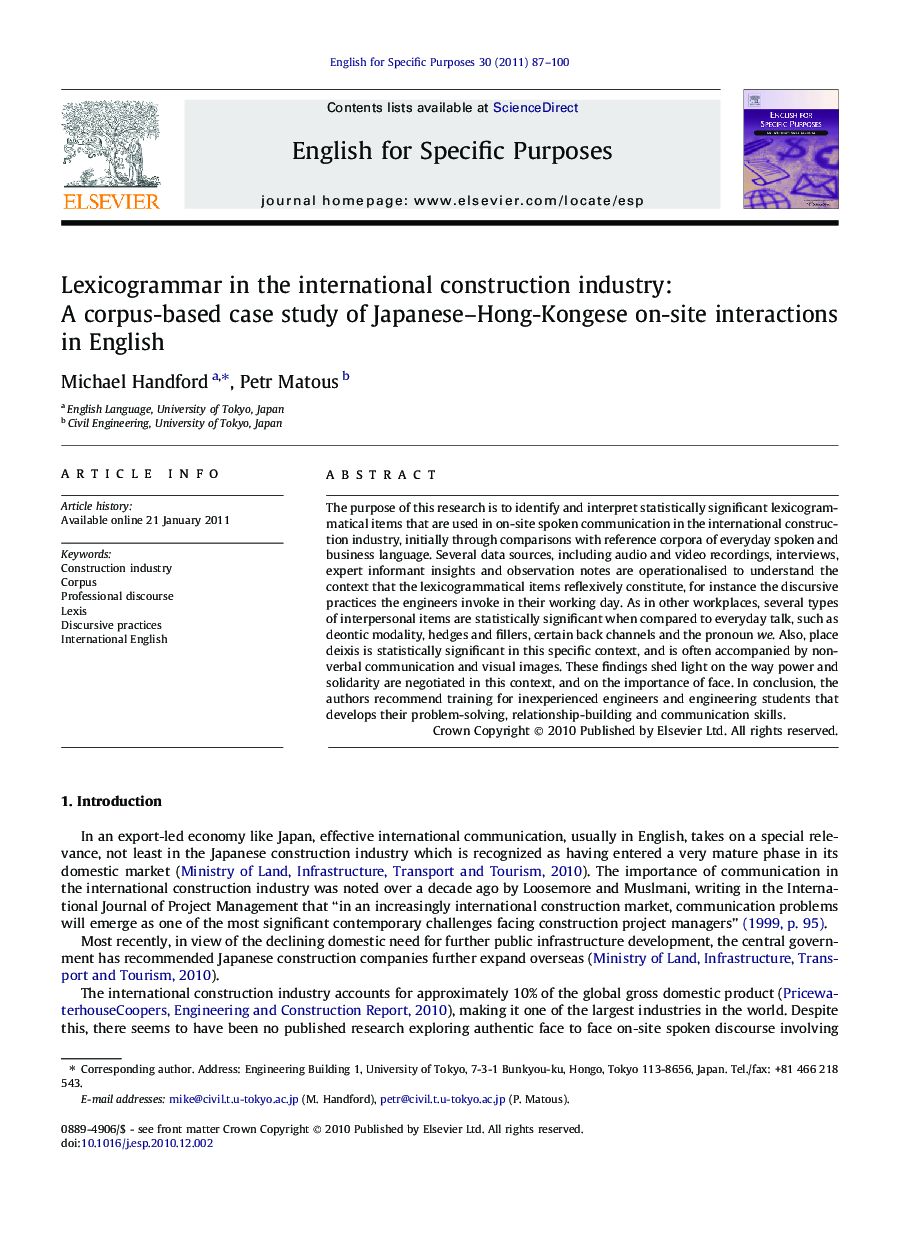| Article ID | Journal | Published Year | Pages | File Type |
|---|---|---|---|---|
| 355547 | English for Specific Purposes | 2011 | 14 Pages |
The purpose of this research is to identify and interpret statistically significant lexicogrammatical items that are used in on-site spoken communication in the international construction industry, initially through comparisons with reference corpora of everyday spoken and business language. Several data sources, including audio and video recordings, interviews, expert informant insights and observation notes are operationalised to understand the context that the lexicogrammatical items reflexively constitute, for instance the discursive practices the engineers invoke in their working day. As in other workplaces, several types of interpersonal items are statistically significant when compared to everyday talk, such as deontic modality, hedges and fillers, certain back channels and the pronoun we. Also, place deixis is statistically significant in this specific context, and is often accompanied by non-verbal communication and visual images. These findings shed light on the way power and solidarity are negotiated in this context, and on the importance of face. In conclusion, the authors recommend training for inexperienced engineers and engineering students that develops their problem-solving, relationship-building and communication skills.
Research highlights► We pinpoint frequent lexical items used in international construction discourse. ► The mixed method approach shows how lexical items constitute discursive practices. ► We compare international construction discourse with business and everyday English. ► Actual interactions involving English as a professional lingua franca are analysed.
